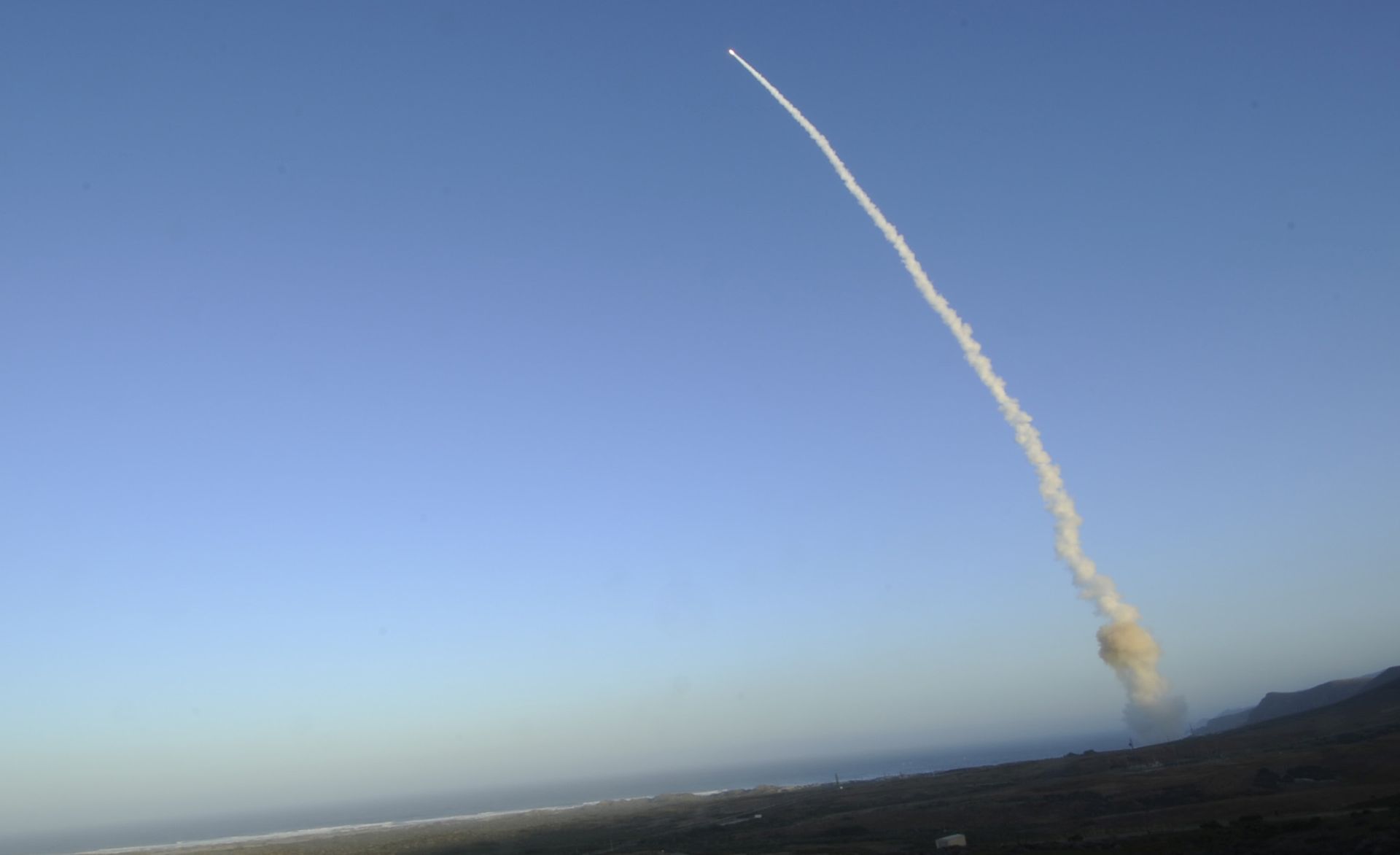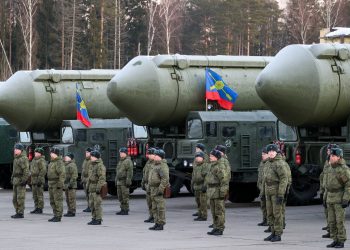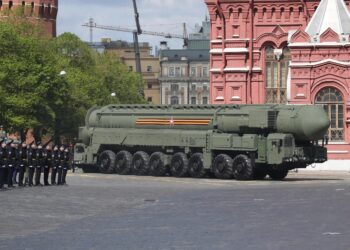Minuteman III intercontinental ballistic missiles (ICBMs) that make up one part of the American nuclear deterrent remain highly relevant to security. The ICBM force provides many benefits that other strategic systems do not: they shorten the time needed to execute the president’s response to a nuclear attack, increase the total number of targets an adversary would have to destroy to compromise America’s deterrent, and cannot be wiped out with conventional forces like other nuclear weapons. Eliminating ICBMs would weaken America’s nuclear deterrent that protects its homeland and allies from a nuclear first strike.
ICBMs are deployed in underground silos at three U.S. bases. Current weapons were fielded in 1970 with a planned service life of 10 years, but have lasted over 40 years because they have been refurbished many times. The U.S. cannot continue to sustain its Cold War ICBM force any longer because it is antiquated and hard to maintain. Thus, the Air Force will develop a new missile as part of the Ground-based Strategic Deterrent (GBSD) program that will be deployed in the 2027 timeframe.
The Air Force’s initial proposal calls for 642 missiles of which 400 would be operationally deployed until the 2070s; the remaining rockets will be used for flight tests and to support the program. But the ICBM force is facing controversy because funding for its modernization will take place simultaneously with replacements of other legs of the Cold War “triad.” The cost to develop and deploy the new weapons is $62.3 billion from fiscal year 2015 through fiscal year 2044 – $48.5 billion for the missiles, $6.9 billion for command and control systems, and $6.9 billion to renovate the launch control centers and facilities.
The GBSD budget is calibrated to the New Start Treaty that expires in 2021 – the approach could change if Russia and the U.S. agree to further reductions or fail to conclude a follow-on treaty. The Air Force requested $113.9 million in fiscal year 2017 for GBSD to develop, test and evaluate the new missile. For fiscal year 2018 the service will request $294 million, and $321.1 million for fiscal year 2019. The cost of the program will then rise significantly in fiscal year 2020 to about $1.03 billion and $1.56 billion for 2021.
Unfortunately, the White House’s fiscal year 2017 budget proposes to delay fielding GBSD by one year, from 2027 to 2028, and to postpone the milestone B decision to begin an engineering and manufacturing development phase from March 2019 to June 2020, according to U.S. Air force budget documents. GBSD should not be fielded later than 2027 because the program only has three years of leeway to deploy new missiles before the current ICBM force must retire in 2030. It takes time to develop, test, launch, and certify a brand new missile. Hence, it is a good idea to allow a few years between fielding the new missiles and retiring the old ones as insurance in case the process experiences delays. The ICBM force is already decades past its originally planned service life – delaying another year potentially puts the credibility of the ground-based deterrent at risk. Developing a new ICBM allows the U.S. Air Force and Navy to develop commonalities for their missiles to save funds and consolidate maintenance in the future.
While modernizing ICBMs is not cheap, it is worth noting that they are the least expensive component of the nuclear deterrent, and they provide many benefits that the other legs do not. First of all, ICBMs are on alert status which shortens execution of a president’s decision to launch weapons in response to a nuclear surprise attack. De-alerting ICBMs is a bad idea; if the president decided to launch them, execution would be delayed since missiles would have to be prepared. In addition, if ICBMs were eliminated, an enemy would only need to strike a small number of targets to diminish the American strategic posture.
There are three bases for nuclear-capable bombers and two bases for ballistic missile submarines (SSBNs); that makes a total of five targets on the American homeland. If an adversary were to launch a nuclear attack, some SSBNs would be safe at sea carrying up to 24 Trident missiles with multiple warheads on each and could launch an attack on an enemy or combination of enemies. However, bombers are not undetectable and can be destroyed with conventional forces, thus the air leg would be vulnerable and possibly compromised.
While nuclear submarines are undetectable in the ocean today, a technological breakthrough could occur that would make the oceans less opaque – especially with the fast pace at which technology now develops. The sea-based leg might be severely weakened and could be at risk of being destroyed by conventional forces. Thus, the land leg would increase in significance as would any remaining bombers. Finally, eliminating ICBMs may motivate potential adversaries to try even harder to develop the capability to locate nuclear submarines underwater to put America’s second-strike capability at risk.
If those reasons are not sufficient as to why ICBMs remain relevant today, take a look at what countries are doing in other parts of the world. Moscow plans several tests of ICBMs this year and even more in 2017 while working on a new liquid-fueled ICBM that may be able to carry 10 nuclear warheads with a combined explosive yield of about 7,500 kilotons – roughly 500 times that of the Hiroshima bomb. Beijing tested its DF-41 road-mobile ICBM twice last year that has a range of up to 7,456 miles – road mobile ICBMs increase survivability because they do not have set locations for an enemy to target – and the latest flight test used two multiple independently-targetable reentry vehicles on the DF-41. China is developing the DF-5B, a new liquid-fueled ICBM designed to strike targets anywhere on Earth carrying four to six warheads, expected to be deployed in the next two years. North Korea revealed a modified version of its liquid-fueled KN08 ICBM in its fall parade, and recently launched its sixth long-range rocket test that placed a satellite into orbit (testing rockets through satellite launches provides invaluable data for potential future ICBMs).
Deterrence is effective because it causes the enemy to fear a massive retaliatory response; ICBMs in particular ensure an adversary’s objectives are beyond reach because they are on alert and cannot be destroyed by conventional forces. Without ICBMs, execution of the president’s response to a nuclear first strike might be delayed and the challenge of disarming America in a surprise attack would be greatly simplified. A new ICBM is an expensive but essential investment that will prevent a potential aggressor from launching a nuclear first strike and ensure these fearsome weapons are never used.










